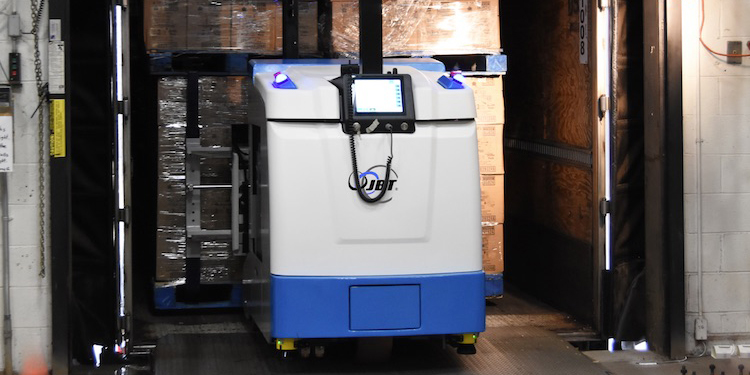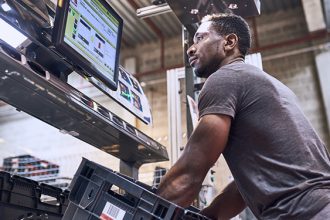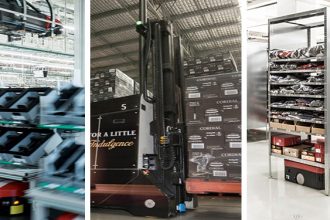Discover How Mobile Automated Vehicles Enhance A Variety Of Material Transport Applications

Whether an application deploys automatic guided vehicles (AGVs), automatic guided carts (AGCs), or autonomous mobile robots (AMRs), mobile automated vehicles (MAVs) are increasingly supporting flexible material movement in manufacturing, distribution, and warehousing. To share more insights into how different operations are utilizing these versatile and scalable load transportation solutions, the members of MHI’s Mobile Automation Group hosted an education session at ProMatDX 2021. The 25-minute presentation covered eight successful applications, installation challenges and how they were overcome, and the competitive advantages these systems delivered.
Among the shared application examples are:
Goods-to-person e-commerce order fulfillment. As a means to replace conventional, manual picking, this e-commerce fulfillment facility deployed 36 AMRs with the ability to lift and transport 350 separate mobile storage racks of product, delivering them to five different ergonomic pick stations. Driven by warehouse execution system (WES) software, the operation was able to reduce labor costs, increase its order accuracy, boost productivity and efficiency, and create a safer work environment.
Lineside delivery and replenishment in automotive assembly. With manufacturing on the first floor and assembly on the second floor, the addition of 28 AMRs with lift capability allowed the automotive operation to deliver and retrieve 80 custom carts and pallet stands lineside by traveling up and down an elevator. Equipped with radio-frequency identification (RFID) transponders and integrated with the facility’s manufacturing execution system (MES), the AMRs reduced waste and labor while improving ergonomics and increasing overall efficiency.
Supplement limited workforce in home appliance manufacturing. Having experienced a significant uptick in demand with a limited labor force, the appliance manufacturer deployed three pallet transport AMRs to eliminate unnecessary material movement and putaway congestion without making any facility layout changes. The automation reduced overtime costs, improved material tracking, enhanced safety, cut facility damage, and saved pickers two miles of daily travel. Further, pickers were able to be reallocated to higher value, more engaging tasks.
End-of-line automated trailer loading. To save time and increase efficiency in outbound shipping, this operation deployed 10 automatic trailer loading AGVs equipped with interlocks and sensors that interface with the dock equipment for safety. The AGVs retrieve pallets of finished goods from stretchwrappers, then automatically and directly load them onto standard, over-the-road trailers in one of 12 different loading patterns. As a result, the operation cut labor costs, eliminated product damage, increased loading accuracy and productivity, and created a safer work environment.
The education session also detailed the benefits of applying MAVs to material transport applications, including:
- More efficient material flow through shorter cycle times and support of just-in-time / just-in-sequence delivery patterns.
- Faster reaction time to changes in critical processes.
- Easy, space-saving integration into existing environments, processes and systems, such as elevators, robotic cells, conveyors, stretchwrapping and strapping systems.
- On-demand scalability, enabling a fleet to grow or relocate to accommodate changing business needs.
- Inherent modularity, allowing the vehicles to be integrated into a variety of systems and to interface with multiple types of automated material handling equipment.
Want to learn more about how these operations addressed installation challenges and successfully implemented MAVs in their applications? Watch the presentation, here.



